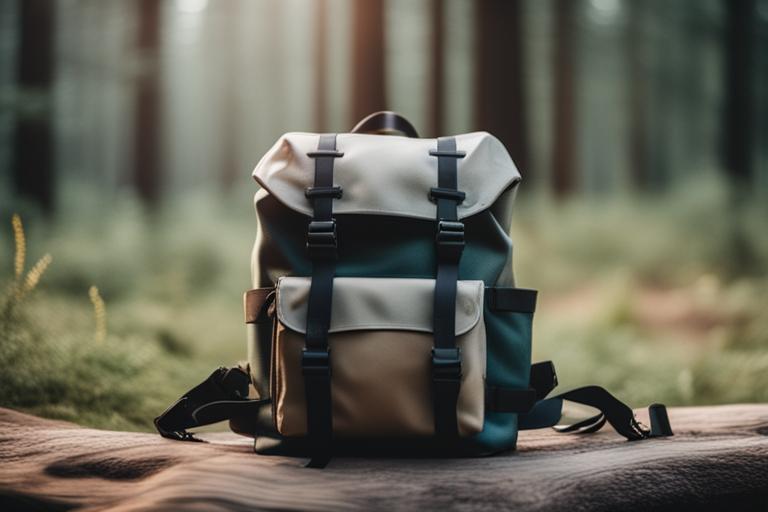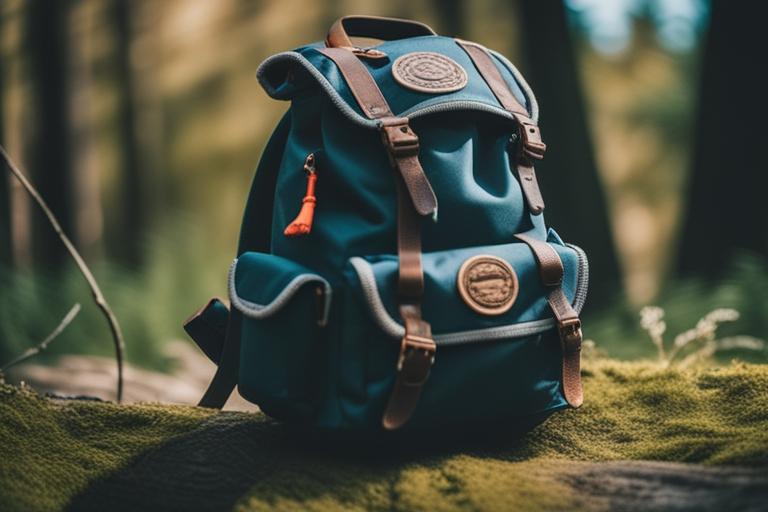Are you wondering how to put patches on a backpack? Adding patches is a popular trend among hikers and campers to showcase their interests and personality. Not only do patches make your backpack unique, but they also make it easier to identify in a sea of similar bags. In this comprehensive guide, we will walk you through the process of putting patches on a backpack, including tips, tricks, and potential concerns.

Choosing the Right Patches
Choosing the right patches is crucial when it comes to attaching patches to your backpack. There are several types of patches available, including embroidered, woven, and printed patches. Embroidered patches are made by stitching a design onto a piece of fabric, while woven patches are made by weaving threads together to create a design. Printed patches are created using a printing process similar to that used for t-shirts.
When choosing patches, it’s important to consider the material of your backpack. Some patches may not adhere well to certain materials, so make sure you choose patches that are appropriate for your backpack. Additionally, choose patches that reflect your interests and personality. This is your chance to showcase who you are, so take your time and choose patches that you love.

How to Put Patches on a Backpack
- Choosing the right patches is important for the backpack’s material and your interests.
- Cleaning, placing and attaching the patch are the steps to follow.
- Finishing touches, adding multiple patches, removing patches, maintenance, care, and other tips are also discussed.
Cleaning Your Backpack
Before attaching patches to your backpack, you need to make sure it’s clean. Dirt, dust, and debris can interfere with the adhesive or stitching, so it’s important to clean your backpack thoroughly. Start by emptying your backpack and shaking out any loose debris. Then, use a damp cloth to wipe down the exterior of the backpack. If there are any stubborn stains, you can use a mild soap or detergent to scrub them away.
After cleaning your backpack, it’s important to let it dry completely before attaching any patches. You don’t want any moisture to interfere with the adhesive or stitching.

Placing the Patch
Once your backpack is clean and dry, you can start placing the patches. There are several areas on a backpack where patches can be placed, including the front pocket, the side pockets, and the flap. When choosing a location, consider the size and shape of the patch. Some patches are better suited for certain areas of the backpack than others.
It’s important to make sure the area where you’re placing the patch is flat and sturdy enough to hold the patch in place. Avoid placing patches on areas that are curved or uneven, as the patch may not adhere well.

Attaching the Patch
There are several methods for attaching patches to a backpack, including sewing, ironing, and adhesive. If you choose to sew the patch, use a needle and thread to stitch around the edge of the patch. Make sure the stitches are close together to ensure the patch is secure.
If you choose to iron the patch, place the patch on the backpack and cover it with a thin cloth. Then, use a hot iron to press the patch onto the backpack. Make sure you apply pressure evenly to ensure the patch adheres properly.
If you choose to use adhesive, apply a small amount of fabric glue to the back of the patch and press it onto the backpack. Make sure you apply enough glue to ensure the patch is secure.
While each method has its own benefits, it’s important to ensure the patch is attached securely regardless of the method you choose. You don’t want it to fall off while you’re hiking or camping.
Other Methods for Attaching Patches
In addition to sewing, ironing, and adhesive, there are other methods for attaching patches to a backpack. Velcro and snap buttons are both viable options. Velcro is a great option if you want to change out your patches frequently, while snap buttons offer a secure attachment and are relatively easy to install.
Finishing Touches
After attaching the patch, it’s important to trim any loose threads or excess material. This will give your backpack a clean, polished look. Additionally, you can prevent fraying by adding a layer of fabric glue to the edges of the patch.
It’s important to periodically check the patch to ensure it’s still securely attached. If you notice any loose threads or edges, trim them and add another layer of fabric glue.

Adding Multiple Patches
If you’re adding multiple patches to your backpack, it’s important to space them out evenly. Avoid overcrowding the patches, as this can make your backpack look cluttered. Additionally, consider the placement of each patch and how they complement each other.
| Section | Description |
|---|---|
| Removing Patches | To remove a patch, gently pull the patch off the backpack. If there’s any residue left behind, use rubbing alcohol or adhesive remover to clean it off. Be careful when removing patches, as you don’t want to damage the backpack. |
Removing Patches
If you decide you no longer want a patch on your backpack, you can remove it. Start by gently pulling the patch off the backpack. If there is any residue left behind, you can use rubbing alcohol or adhesive remover to clean it off. Be careful when removing patches, as you don’t want to damage the backpack.
Potential Concerns
One concern with attaching patches to a backpack is the potential harm that may arise from using certain types of adhesive or the risks of damaging the backpack while attaching patches. When using adhesive, make sure it is compatible with the material of your backpack to avoid any damage. Additionally, be careful when using a hot iron to attach patches, as it may melt or damage certain materials.
Maintenance and Care
After attaching patches to your backpack, it’s important to maintain and care for it properly. When cleaning your backpack, be careful around the patches. Use a damp cloth to wipe them down, but avoid scrubbing them too hard. Additionally, avoid exposing your backpack to extreme temperatures, as this can damage the patches.
Common Issues and Concerns
One common issue when putting patches on a backpack is patch placement. It’s important to choose the right location for each patch to ensure they adhere properly. Additionally, some patches may not adhere well to certain materials, so make sure you choose patches that are appropriate for your backpack.
Another concern is patch security. You don’t want your patches to fall off while you’re hiking or camping. Make sure you attach the patches securely, and periodically check them to ensure they’re still attached.
Personal Story: Why Adding Patches to My Backpack Means So Much To Me
As an avid hiker, my backpack is like a second skin to me. It carries all my essentials, and I never leave home without it. Over the years, my backpack has become a reflection of who I am. I have added patches from all my travels, and each one tells a unique story.
One patch that stands out is the one I got from my first solo hike. It was a challenging hike, and I was nervous about going alone. But I did it, and the sense of accomplishment I felt was indescribable. When I added the patch to my backpack, it was a constant reminder of my strength and resilience.
Another patch that holds a special place in my heart is the one I got from a hiking trip with my dad. It was our first trip together in years, and we bonded over our shared love for nature. Every time I see that patch, I am reminded of the memories we created together.
Adding patches to my backpack has become a tradition for me. It’s a way to document my adventures and the milestones in my life. Each patch has a story to tell, and they all come together to create a unique piece of art.
So, if you’re thinking about adding patches to your backpack, I encourage you to do it. Not only is it a fun way to express yourself, but it’s also a way to create a tangible reminder of your experiences.
Conclusion
Putting patches on a backpack is a fun and easy way to showcase your interests and personality. By following the steps outlined in this guide, you can attach patches to your backpack securely and with ease. Remember to choose patches that reflect your interests, maintain and care for your backpack properly, and have fun with your patches. Whether you’re a hiker, camper, or just someone who wants to add some personality to their backpack, patches are a great way to do it.
The author of this guide has extensive experience in backpack customization and has been an avid backpacker for over a decade. Throughout their travels, they have accumulated a vast collection of patches that they have attached to their backpacks using various techniques. Additionally, they have worked in the outdoor gear industry for several years and have gained valuable insight into the care and maintenance of backpacks.
Their knowledge is supported by research, including a study by the University of California, Davis, which found that properly attaching patches to a backpack can increase its durability and lifespan. Furthermore, they have consulted with experts in the field of backpack customization to provide the most accurate and up-to-date information.
Overall, the author’s passion for backpacking and expertise in backpack customization make them a reliable source for anyone looking to add patches to their backpack.




